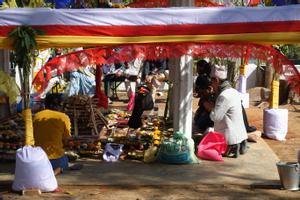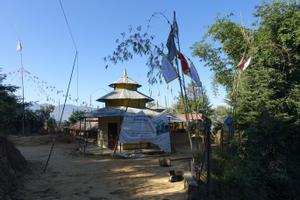Rituals
Limbu in north-east Nepal and Sikkim follow several religious traditions, which nevertheless share common elements and values, such as the central role given to the community’s mythological corpus (mundhum in Limbu). These traditions include ‘shamanic’ ritual performances, which are practiced by traditional ritual specialists such as the Phedangma, Yeba and Samba. The data presented in this collection attest to the vitality of these practices today. They comprise life cycle rituals (marriage and death rituals for example), calendrical rituals (such as harvest rituals), and rituals performed to deal with life events, such as healing rituals. Limbu today also follow several ‘reform’ movements: Satyahangma (Phalgunanda, Atmananda), Omnanda (in addition to Christianism, which is, however, not documented in this collection), and, in Sikkim, Yumaism (whose centre is in Darap, West Sikkim). The data in this collection show that these movements are today very active not only in large urban centers such as Phidim and the Kathmandu valley, but also in small towns (such as Prangbung) and villages in Panchthar District. The data presented in this collection were collected between 2017 and 2019 as part of the FWF-project “Trans-Border Religion – Re-composing Limbu Rituals in the Nepal-Sikkim Borderlands” (P 29805, 11/2016–10/2020). In this project, Limbu rituals were approached from a borderland perspective, and this data highlights cross-border connections and similarities in Limbu rituals, processes of bordering, that is to say the introduction of differentiation along the border and between religious traditions, as well as negotiations among Limbu about the definition of authenticity, identity and community.

